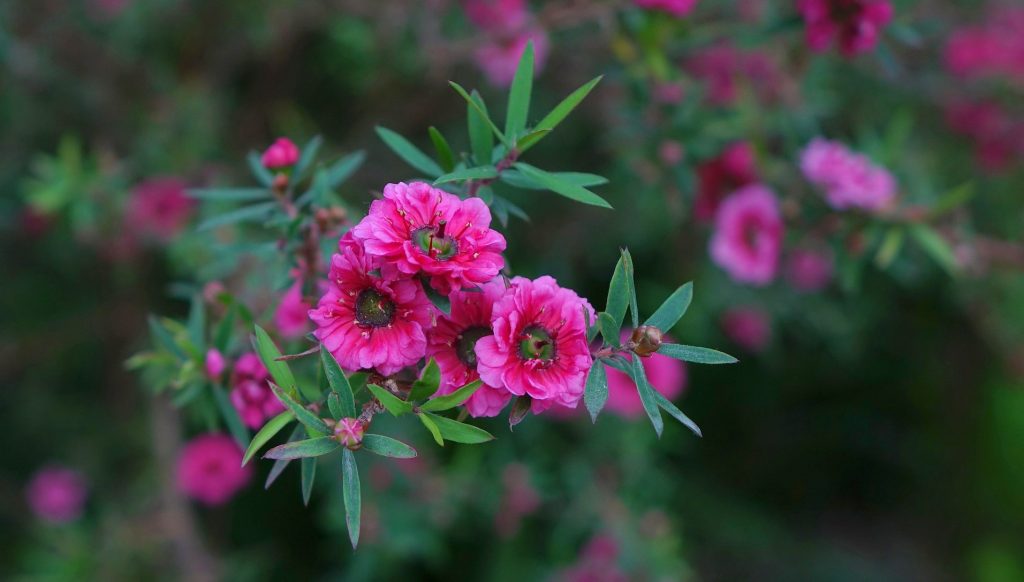Exotic honey comes to rescue in fighting deadly C. difficile infections
(GreenMedInfo | Sayer Ji) Today, an alarming number of patients are falling victim to antibiotic-resistant infections, including those like C. difficile which aren’t just resistant to conventional antibiotics but actually caused by them. Thankfully, even when antibiotics fail to produce positive outcomes, ancient medicinal foods like honey may come to the rescue.
A recent report published in the International Journal of Antimicrobial Agents reveals that an exotic honey may provide a powerful alternative to conventional antibiotics in treating one of the most common and deadly forms of infection in the United States today.
In a letter to the editor of the journal titled, “Successful treatment of persistent Clostridium difficile infection with manuka honey,” two scientists from the Department of Gastroenterology and Hepatology, Elisabeth-TweeSteden Hospital, Netherlends, discuss the therapeutic potential of a honey indigneous to Australia and New Zealand known as Manuka for treating Clostridium difficile infections.
Most serious Clostridicum difficile infections are caused by antibiotic-associated depopulation of the gut flora, leading to the overgrowth of what would otherwise be harmless bacteria in most cases. For instance, about 60-70% of newborns are assymptomatically colonized by Clostridium difficle. 1 It is only when the microbiome is assaulted with broad spectrum antibiotics that this spore-forming, Gram positive bacteria can grow out of its natural bounds to cause serious problems. We’ve also reported previously about the role of the herbicide glyphosate (aka Roundup) in contributing to deadly Clostridium infections.
In the new study researchers describe the problem of Clostridium difficile infection as follows:
“Clostridium difficile-associated disease is an increasingly common health problem. C. difficile is a causative agent of antibiotic associated pseudomembranous colitis, antibiotic-associated colitis and antibiotic-associated diarrhoea [1]. C. difficile overgrowth usually occurs during antibiotic therapy as the normal gastrointestinal flora is disrupted. Discontinuation of antibiotics does not lead to symptomatic improvement, and new strains of the pathogen have a substantial failure rate after therapy cessation [2].”
C. difficile has become one of the most worrisome infections in the US, with an estimated 453,000 cases diagnosed each year, and 29,000 of those resulting in fatalities in 2011 alone. 1 2
The conventional medical establishment is beginning to wake up to the extent of the problem. Today, it is not uncommmon to hear news reports of how conventional antibiotics are completely impotent vis-a-vis the growing scourge of antibiotic-resistant bacteria. The CDC, in fact, has recently labeled these “nightmare bacteria,” and has warned that conventional medicine will soon be completely helpless to do anything to countermand these deadly infections.
Honey comes to the rescue
The new study may provides hope to the hopeless. If true, honey — one of the most ancient food-medicines known to man — may possess life-saving properties against antibiotic resistant infections. The study elaborates further:
“Our research team [5], as well as other clinical researchers [6], have performed in vitro studies demonstrating that unprocessed honeys have antibacterial activity against a range of pathogens, including C. difficile. Although the therapeutic mechanism of honey has not yet been fully elucidated, an antibacterial effect has been attributed to osmolarity, hydrogen peroxide generation and unidentified additional phytochemical components [7]. Furthermore, as well as antibacterial activity, honey has been shown to have an anti-inflammatory function [5]. Manuka (Leptospermum scoparium) honey has been graded using the ‘Unique Manuka Factor’ (UMF+), describing the strength of the hypothesized active substances. This grading system has been renamed methylglyoxal (MGO+), in which the effect is attributed to methylglyoxal, a stable antimicrobial compound shown to have an antibacterial action [8], including against bacteria with resistance to antibiotics [9–11].
We have featured the power of manuka to fight infections in previous articles, and in our honey and manuka honey database. Unlike normal honey, whose infection-fighting properties most likey derive from its hydrogen peroxide and probiotic content (contributed by bacteria whose lineage is trackable to an astounding ~ 80 million years ago), the Manuka plant provides additional healing properties (which some attribute to so-called Unique Manuka Factor’ (UMF+) that makes it one of the most extensively researched and useful honeys in medicine today.
The study also reported a remarkable case of a woman who was resistant to improvement after multitude of antibiotics undergoing full remission following the administration of Manuka honey:
“Here we describe, to the best of our knowledge, the first case of therapy-resistant CDI with complete resolution of symptoms following bowel lavage with diluted honey. A 71-year-old woman was seen at the Gastroenterology and Hepatology Outpatient Clinic of Elisabeth-TweeSteden Hospital (Tilburg, The Netherlands) presenting with frequent watery stools and faecal incontinence. Results of laboratory investigations and colonoscopy showed CDI. The patient was initially treated with vancomycin. However, diarrhoea persisted during treatment and concurrent therapy with metronidazole resulted in adverse side effects. Consequently, the patient was treated with fidaxomicin and following 10 days of antibiotic therapy she experienced a decrease in symptoms.
However, 1 day after cessation of therapy the patient exhibited a relapse of watery stools. The relapsing nature of the infection dictated continuous antibiotic therapy over months with relapse of diarrhoea immediately after cessation of fidaxomicin. Treatment with FMT was discussed; however, the patient refused this approach in therapy.
As an alternative, the patient was offered a therapeutic intervention with commercially available manuka honey with UMF 26+ and received a 300 mL endoscopic honey lavage with a solution of 8% honey, administered throughout the entire colon. Following initial lavage treatment the patient remained symptom free for 5 days before frequent watery stools re-occurred. A second lavage of the colon and terminal ileum was administered with 15% honey solution, after which the patient experienced complete cessation of watery stools and has remained symptom free for 12 months. Further stool analysis following treatment failed to identify C. difficile following the procedure. This case report demonstrates the possible therapeutic value of honey lavage as a treatment for therapy-resistant CDI, indicating the need for more clinical research into this matter.” [emphasis added]
Honey is one of nature’s most powerful healing foods, and has plenty of science to support it. On our honey research dashboard we have identified its potential therapeutic value in over 120 different disease states. Take a look at the first hand research here.
For additional research on natural substances with potential value in treating Clostridium infections visit the relevant research section here.
For additional research on over 100 natural substances that have been studied to fight antibiotic-resistant infections the relevant research section here.
References
1 Bolton RP, Tait SK, Dear PR, Losowsky MS. Asymptomatic neonatal colonisation by Clostridium difficile. Arch Dis Child 1984; 59: 466–472. | Article | PubMed | CAS |
2 Lessa, Fernanda C.; Mu, Yi; Bamberg, Wendy M.; Beldavs, Zintars G.; Dumyati, Ghinwa K.; Dunn, John R.; Farley, Monica M.; Holzbauer, Stacy M.; Meek, James I.; Phipps, Erin C.; Wilson, Lucy E.; Winston, Lisa G.; Cohen, Jessica A.; Limbago, Brandi M.; Fridkin, Scott K.; Gerding, Dale N.; McDonald, L. Clifford (26 February 2015). “Burden of Infection in the United States”. New England Journal of Medicine. 372 (9): 825–834. doi:10.1056/NEJMoa1408913. PMID 25714160.
3 Butler, M; Olson, A; Drekonja, D; Shaukat, A; Schwehr, N; Shippee, N; Wilt, TJ (March 2016). “Early Diagnosis, Prevention, and Treatment of Clostridium difficile: Update”. AHRQ Comparative Effectiveness Reviews.: vi,1. PMID 27148613.
About the author
Sayer Ji is founder of Greenmedinfo.com, a reviewer at the International Journal of Human Nutrition and Functional Medicine, Co-founder and CEO of Systome Biomed, Vice Chairman of the Board of the National Health Federation, Steering Committee Member of the Global Non-GMO Foundation.
Source: GreenMedInfo




